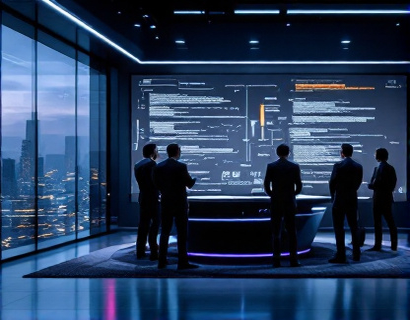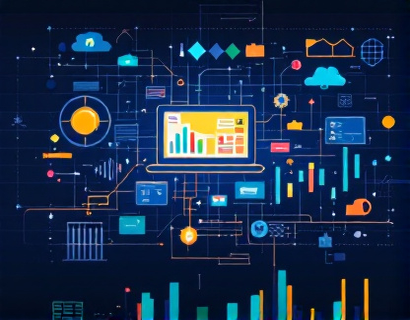Unlocking the Universe: Interactive Software for Astronomy Education and Exploration
The quest to understand the cosmos has captivated human imagination for centuries. From the earliest astronomers who mapped the stars to modern scientists unraveling the mysteries of black holes, the allure of the universe remains unbroken. In recent years, the advent of interactive software has revolutionized astronomy education and exploration, making the vast and complex universe more accessible than ever before. This article delves into the transformative power of these tools, designed to bridge the gap between intricate celestial concepts and engaging, hands-on learning experiences.
Transforming Astronomy Education
Traditional astronomy education often faces challenges in conveying the scale and complexity of the universe. Interactive software addresses these challenges by providing immersive learning environments that simulate real astronomical phenomena. These tools allow users to explore the cosmos in a way that textbooks and lectures cannot. For instance, students can virtually travel through the solar system, witnessing the dynamic interactions between planets and their moons, or observe the life cycle of stars from birth to supernova.
One of the key benefits of interactive software is its ability to visualize data in intuitive and engaging ways. Complex data sets, such as the distribution of galaxies in the universe or the intricate patterns of cosmic microwave background radiation, can be transformed into interactive 3D models. This not only aids in comprehension but also sparks curiosity and a deeper interest in the subject matter.
Engaging Resources for All
Interactive astronomy software is designed to cater to a diverse audience, including astronomy enthusiasts, educators, and students of all ages. For amateur astronomers, these tools offer a gateway to professional-level observations and data analysis. They can use the software to track celestial events, such as planetary alignments and meteor showers, and even contribute to citizen science projects by analyzing real astronomical data.
Educators can leverage these resources to create dynamic and interactive lesson plans. The software provides a wealth of teaching materials, including lesson plans, quizzes, and interactive simulations. These resources make it easier for teachers to engage students and foster a love for astronomy. For example, a teacher can use the software to demonstrate the principles of orbital mechanics by allowing students to manipulate variables and observe the effects in real-time.
For students, the interactive nature of the software makes learning astronomy both fun and effective. Gamification elements, such as challenges and rewards, encourage active participation and reinforce learning. Students can earn badges for completing modules or achieving specific milestones, which can be particularly motivating. The software also supports collaborative learning, enabling students to work together on projects and share their findings.
Comprehensive Tools for In-Depth Exploration
Interactive astronomy software offers a wide range of tools for in-depth exploration of the universe. One of the most powerful features is the ability to create custom views and simulations. Users can design their own celestial scenes, adjusting parameters such as time, scale, and perspective to explore specific phenomena in detail. For instance, one can simulate the formation of a galaxy by adjusting factors like gas density, temperature, and gravitational forces.
Another essential tool is the data visualization module. This allows users to plot and analyze astronomical data, such as light curves from variable stars or spectra from distant galaxies. The software often includes built-in analysis tools, enabling users to perform calculations and draw conclusions based on their observations. This hands-on approach to data analysis is invaluable for both students and professionals, fostering a deeper understanding of astronomical processes.
The software also includes a comprehensive database of celestial objects, covering everything from nearby asteroids to distant quasars. Each entry in the database provides detailed information, including physical characteristics, orbital parameters, and historical observations. Users can search for specific objects or browse categories, making it easy to explore the universe in a structured manner.
Enhancing Accessibility and Inclusivity
One of the most significant advantages of interactive astronomy software is its ability to make astronomy more accessible. Traditional observatories and telescopes are often located in remote areas with minimal light pollution, limiting access for many people. Interactive software removes these barriers by bringing the universe to users' devices, whether they are at home, in a classroom, or anywhere with an internet connection.
Moreover, the software is designed to be inclusive, catering to users with different learning styles and abilities. Visual learners benefit from the rich graphical representations, while kinesthetic learners can engage with interactive simulations. The software also supports multiple languages and includes features like text-to-speech for users with visual impairments. This inclusivity ensures that everyone, regardless of their background or abilities, can participate in the wonder of astronomy.
Fostering a Deeper Understanding and Curiosity
The ultimate goal of interactive astronomy software is to foster a deeper understanding and ignite curiosity about the universe. By providing immersive and interactive experiences, these tools help users grasp complex concepts and develop a sense of wonder about the cosmos. The software encourages users to ask questions, explore hypotheses, and seek answers, mirroring the scientific method itself.
For example, a user might start by exploring the surface of Mars using a virtual rover. As they navigate the Martian terrain, they can collect data on geological features, atmospheric conditions, and potential signs of past water. This hands-on exploration not only teaches about Mars but also introduces concepts related to planetary science, geology, and astrobiology. The software can guide users through related topics, suggesting further readings and resources to deepen their knowledge.
Interactive quizzes and assessments built into the software help users gauge their understanding and identify areas for further study. These tools provide immediate feedback, reinforcing learning and encouraging continued exploration. Over time, users can track their progress, set goals, and engage in lifelong learning in the field of astronomy.
Conclusion
Interactive software for astronomy education and exploration represents a significant leap forward in making the universe accessible and engaging. By combining immersive experiences, comprehensive tools, and inclusive design, these platforms bridge the gap between complex celestial concepts and meaningful learning. Whether you are a seasoned astronomer, a curious student, or simply someone with a passion for the stars, interactive software offers a unique and enriching way to explore the cosmos. As technology continues to advance, the potential for even more innovative and powerful astronomy tools is vast, ensuring that the wonder of the universe will continue to inspire generations to come.










































